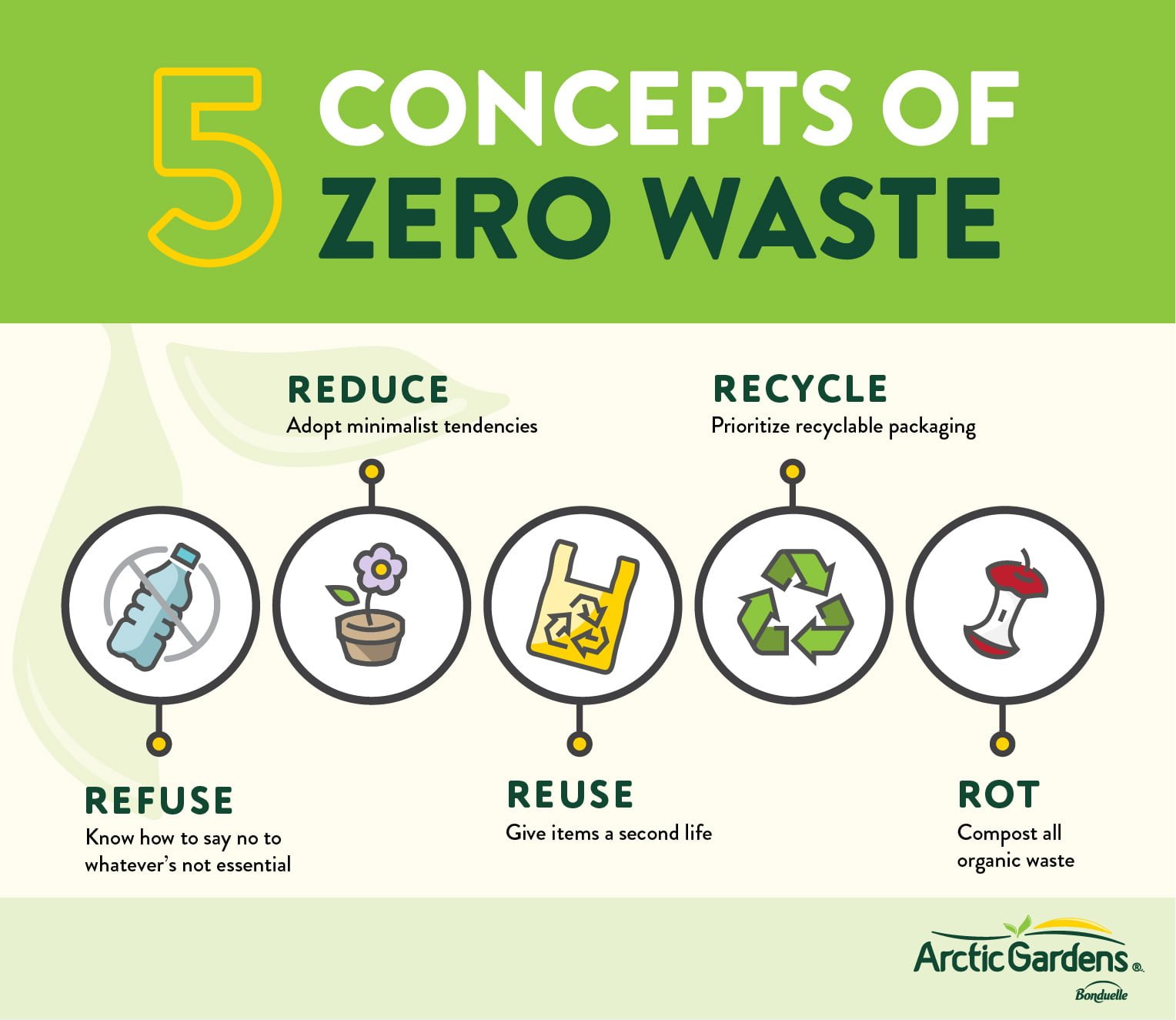
The heart of a zero-waste lifestyle lies in a simple yet profound principle: consume less. It’s about rethinking our relationship with material possessions and questioning the necessity of every purchase. By reducing our consumption, we minimize our environmental impact and free ourselves from the clutter that often weighs us down.
The Art of Mindful Consumption

Mindful consumption is more than just a buzzword; it’s a conscious effort to make informed choices. Before acquiring a new item, ask yourself these questions:
Do I truly need it? Is it a want or a need? A thoughtful pause can often reveal the unnecessary desires that drive impulsive purchases.
The Power of Minimalism
Minimalism, the art of living with less, aligns perfectly with a zero-waste lifestyle. By decluttering our homes and simplifying our lives, we reduce our environmental footprint and improve our overall well-being.
The KonMari Method: This popular decluttering technique encourages us to keep only items that spark joy. By letting go of what no longer serves us, we create space for a more meaningful and sustainable existence.
The Joy of Secondhand Shopping
Secondhand shopping is a fantastic way to reduce consumption and discover unique treasures. Thrift stores, consignment shops, and online marketplaces offer a wealth of affordable and stylish options. By giving pre-loved items a new life, we contribute to a circular economy and reduce the demand for new products.
The Thrill of the Hunt
Exploring secondhand shops can be a thrilling adventure. You never know what hidden gems you might find. Whether it’s a vintage dress, a retro record player, or a quirky piece of home decor, secondhand shopping offers endless possibilities for self-expression and sustainable living.
The Benefits of Borrowing and Sharing
Sharing economy platforms and community lending libraries provide opportunities to borrow or rent items instead of buying them. This reduces the need for individual ownership and minimizes waste. By sharing resources with others, we foster a sense of community and reduce our environmental impact.
The Power of DIY
Do-It-Yourself projects are a fun and creative way to reduce waste and save money. From upcycling furniture to making your own cleaning products, DIY skills empower us to take control of our consumption and create personalized solutions.
The Art of Repurposing
Repurposing items gives them a new lease on life. A glass jar can become a candle holder, a worn-out t-shirt can be transformed into a cleaning cloth, and old newspapers can be used for composting. By finding new uses for everyday objects, we reduce waste and embrace a more resourceful lifestyle.
The Importance of Food Waste Reduction
Food waste is a significant environmental issue. By reducing food waste, we conserve resources and minimize our carbon footprint. Here are a few tips to help you reduce food waste:
Plan your meals: Create a weekly meal plan to avoid impulse purchases and food waste.
By embracing these strategies, we can reduce our consumption, minimize our environmental impact, and live a more fulfilling and sustainable life.
Inmitten der Flut an Plastikverpackungen, die unsere Supermarktregale säumen, kann es verlockend sein, sich einfach treiben zu lassen. Doch es gibt einen Weg, bewusster einzukaufen und dabei einen positiven Einfluss auf die Umwelt zu nehmen: Verpackungsfreies Einkaufen.
Was bedeutet Verpackungsfrei Einkaufen?
Verpackungsfrei Einkaufen bedeutet, Lebensmittel und andere Produkte ohne unnötige Verpackungen zu erwerben. Dies kann durch verschiedene Methoden erreicht werden:
Mitgebrachte Behälter: Bringen Sie eigene Behälter wie Glas- oder Metalldosen mit, um lose Produkte wie Getreide, Nüsse, Kaffeebohnen oder Süßigkeiten abzufüllen.
Warum ist Verpackungsfreies Einkaufen wichtig?
Verpackungsfreies Einkaufen bietet zahlreiche Vorteile für die Umwelt und die Gesellschaft:
Reduzierung von Plastikmüll: Durch die Vermeidung von Einwegverpackungen tragen Sie dazu bei, die Belastung der Umwelt durch Plastikmüll zu verringern.
Tipps für erfolgreiches Verpackungsfreies Einkaufen:
Planung ist der Schlüssel: Erstellen Sie eine Einkaufsliste, um gezielt einzukaufen und unnötige Impulseinkäufe zu vermeiden.
Verpackungsfreies Einkaufen – Ein Anfang
Verpackungsfreies Einkaufen ist ein einfacher Schritt, den jeder von uns unternehmen kann, um einen positiven Einfluss auf die Umwelt zu haben. Es erfordert ein wenig Planung und Kreativität, aber die Belohnung ist groß: ein sauberer Planet und ein gutes Gefühl, etwas Gutes getan zu haben.
Zusätzliche Ideen für einen nachhaltigen Lebensstil:
DIY-Produkte: Stellen Sie eigene Produkte wie Reinigungsmittel oder Kosmetik her, um Plastikverpackungen zu vermeiden.
Indem wir kleine Schritte unternehmen und uns bewusst für nachhaltige Alternativen entscheiden, können wir gemeinsam eine bessere Zukunft für uns und unseren Planeten schaffen.






